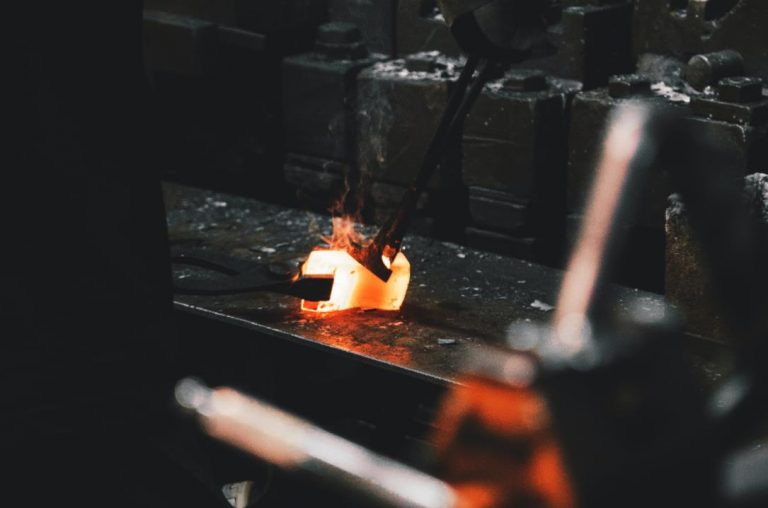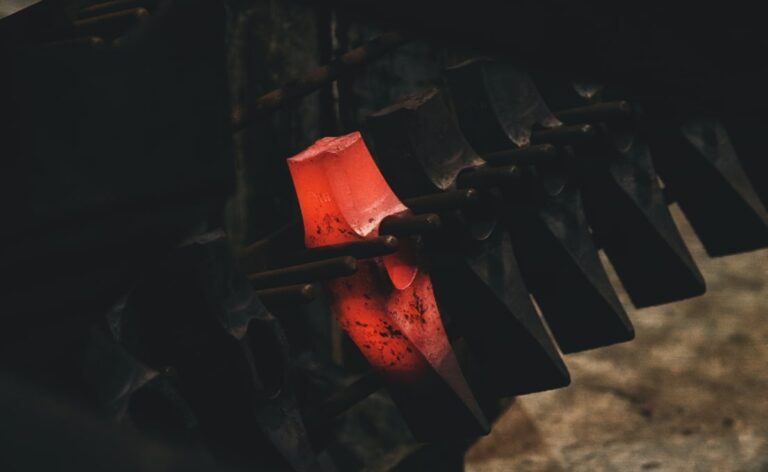440C is medium-grade stainless steel that’s very popular in the custom knife world. It offers great features for its price, more than enough to satisfy an average user.
It has the highest carbon content out of the 440 steel series. This allows 440C to attain higher hardness than 440A and 440B. With satisfying hardness, it provides adequate edge retention. It also has a good amount of chromium compared to its carbon content, enabling it to resist corrosion at a moderate level.
440C steel is one of the most popular stainless steel choices for knifemaking. You can see 440C steel used for making kitchen knives, EDC knives, survival knives, and many more.
While good edge retention and adequate corrosion resistance are highly sought in knives, 440C comes with a few downsides. This article will cover everything on 440C steel and break down its performance as a knife blade material.
440C steel composition
- Carbon: 0.95% – 1.20%
- Chromium: 16.00% -18.00%
- Manganese: 1.00%
- Molybdenum: 0.75%
- Silicon: 1.00%
- Phosphorus: 0.04%
- Sulfur: 0.03%
Is 440C steel good as a knife blade material?
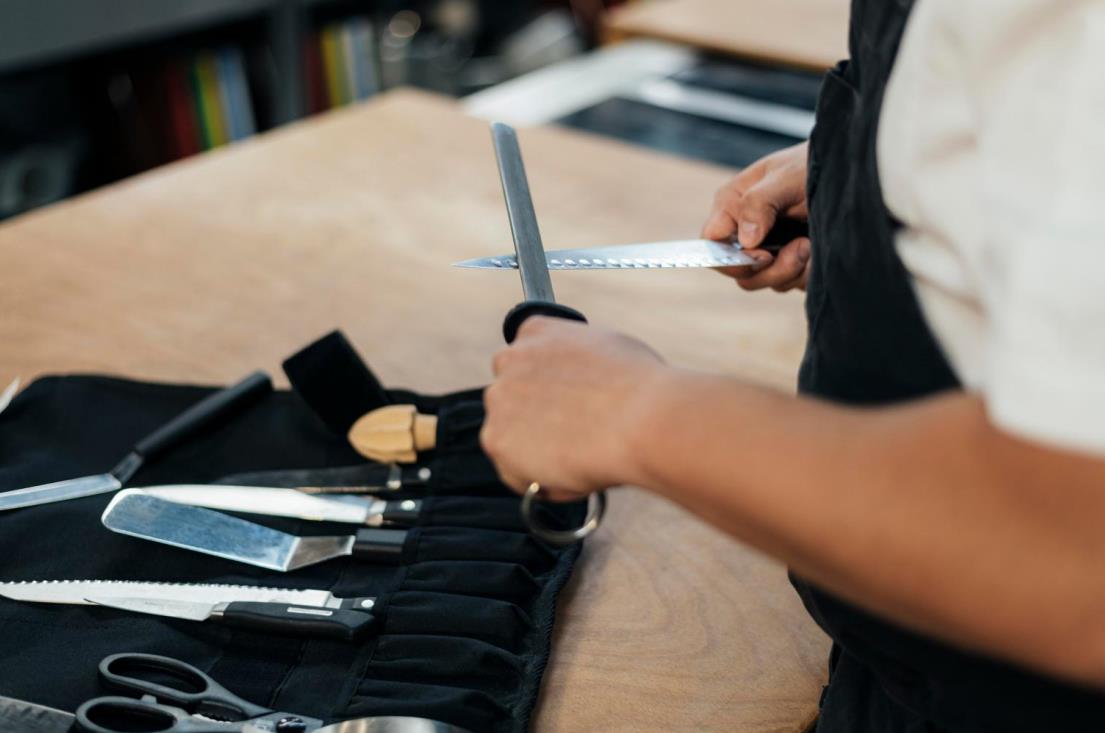
There are many things to cover when discussing what to expect from specific steel as a knife blade. While many things can change from one knife manufacturer to another, there are limits to what every steel can do. Here is how 440C steel performs as a knife material, covering critical factors.
Hardness
The usual hardness of 440C steel for knives is between 58 and 60 HRC. This hardness is at an optimal point to maintain good edge retention and wear resistance without sacrificing too much from toughness.
The 1% carbon content of 440C is the first explanation for its hardness but certainly not the only. The 0.50% of molybdenum and high amounts of chromium add to its hardness. Furthermore, the manganese reduces brittleness. The finished product is a hard steel that’s not as brittle for robust use as a knife.
Buy Wholesale Knives and Start Scaling up with Us Today
Contact us and connect with a sales rep to get a free quote.
Edge retention
440C can keep an edge for good lengths but whether it is satisfying or not comes down to the end user’s expectations. 440C is indeed considerably hard but certainly not the hardest. It will hold a sharp cutting edge if you’re using the knife every so often. However, it won’t be the most satisfying choice when used continuously every day.
There are several reasons for this despite the adequate hardness. 440C has a large carbide volume. This tends to make the edge more toothy as you cut with the knife, sacrificing its sharpness. The more the knife is used, the severity of this will be more apparent, giving you a blade that needs to be sharpened sooner.
These aren’t to say that 440C will get dull right away. 440C is hard, and like any other steel around its hardness, it will provide satisfying edge retention to an average user.
Take a professional chef or someone who’s constantly camping in the outdoors as another example. They will most definitely look for something that has better edge retention. Whether 440C steel has adequate edge retention or not comes down to usage. It’s up to the seller to determine if 440C performs well in this area by looking at their target customers.
Wear resistance
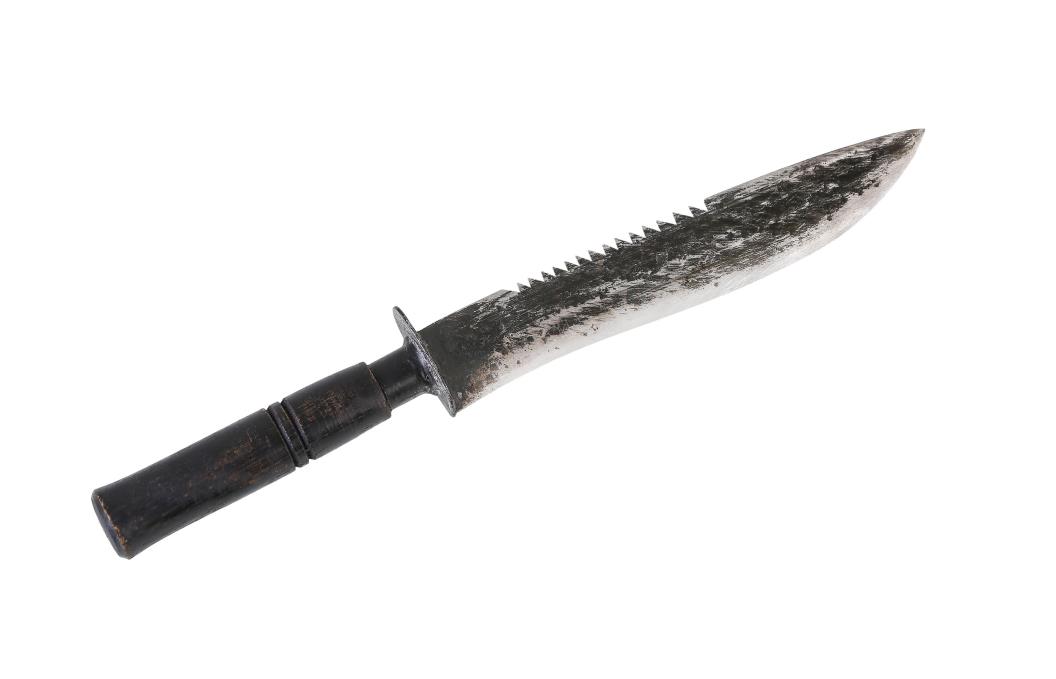
440C has good wear resistance. The high amounts of carbon and chromium ensure plenty of uses from 440C steel without wearing down. Similar to its hardness, 440C doesn’t have the best wear resistance, but it’s adequate for a knife. Although it could have it better with some vanadium or if it were to have smaller carbides, it’s fulfilling as a knife material.
We wouldn’t want it to have an incredible wear resistance anyways. As the wear resistance increases, it becomes more difficult to sharpen the blade. Still, 440C will provide a smooth, scratch-free blade profile for a long time, even under consistent use.
Toughness
440C is medium-grade steel, and it has good hardness and wear resistance. These are enough not to expect incredible toughness from it. 440C may have the highest hardness and wear resistance than its counterparts in the 440 steel series, but we can’t say the same for toughness.
440C steel will underperform in uses where toughness is vital, such as robust and heavy-duty use. Though it won’t make the best cleaver or axe material, 440C is tough enough for any general-purpose knife. The addition of manganese and silicon adds up to its toughness. Manganese reduces brittleness, and silicon removes impurities and decays. These help 440C attain more toughness, but it’s still where it underperforms the most.
The toughness of 440C is similar to VG-10, one of the most commonly used Japanese steel. However, VG-10 has significantly better edge retention that makes up for it. Considering Japanese chefs use their knives for more delicate tasks, this isn’t an issue. The same can’t be said for western chefs. Like edge retention, performance on toughness comes down to the user’s preferences and the tasks performed.
440C steel sharpens pretty quickly using standard sharpening equipment. Even beginners can have an easy sharpening time with a 440C steel knife using proper equipment. The large carbides enable fast sharpening despite the high wear resistance. While sharpening a 440C steel knife won’t pose a significant challenge, it doesn’t have a fine edge.
Again, this is due to large carbides. 440C steel knives have a more toothy edge. This isn’t the preferred edge for delicate slicing, like preparing fish or any other boneless animal protein. However, it has its benefits. When slicing anything with a thick outer layer like peppers or tomatoes, it will tear the skin effortlessly and slice through with a clean cut.
Overall, 440C is easy to sharpen and can have an incredibly sharp edge – just not as much as powder metallurgy or Japanese steels.
Corrosion resistance
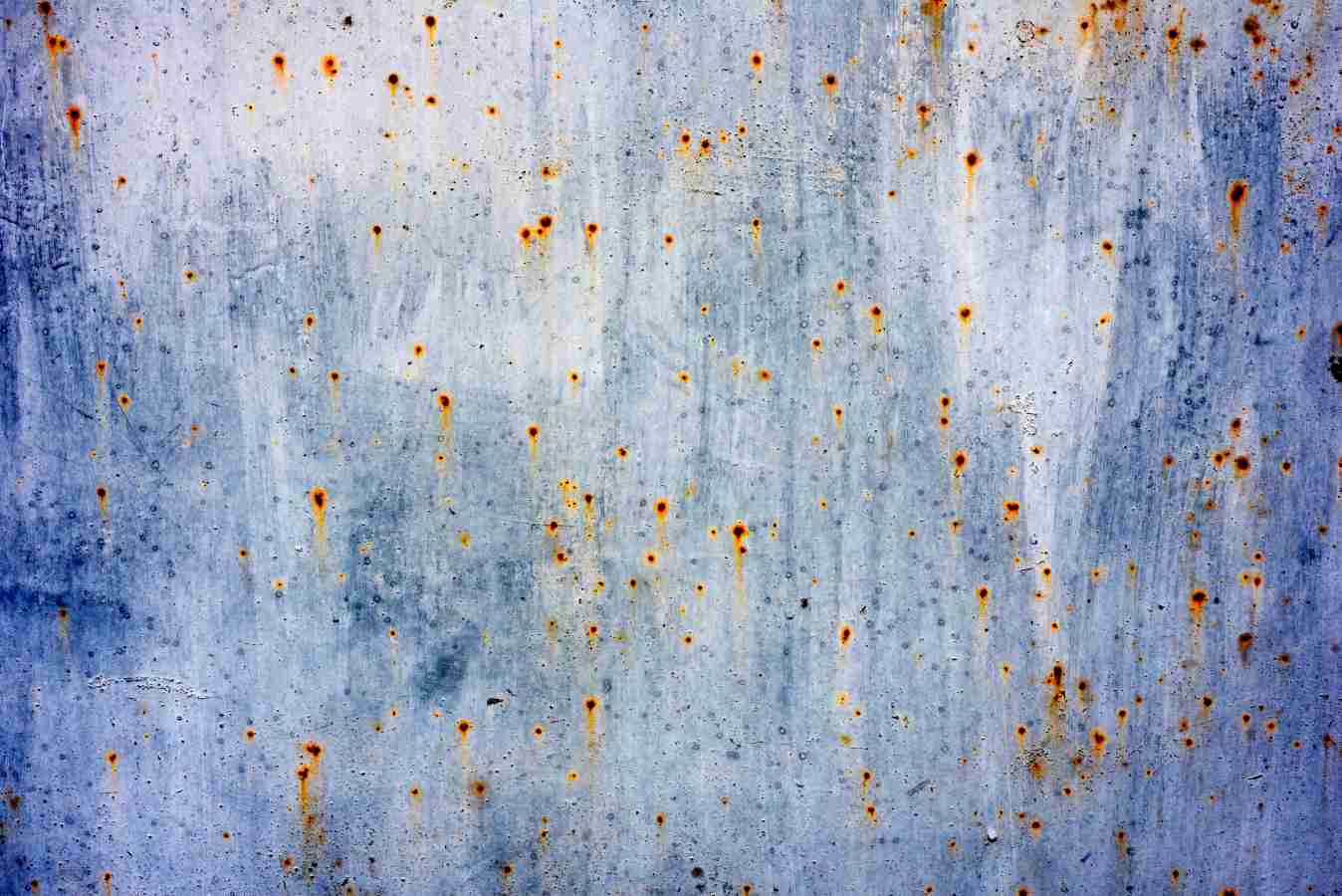
440C steel has good corrosion resistance, and we can say it’s true stainless. Nonetheless, proper heat treatment is crucial for 440C to resist corrosion. Following poor heat treatment, 440C steel’s corrosion resistance will fall behind, along with edge retention and sharpness.
It’s vital to purchase 440C steel knives from a reputable knifemaker, especially if you’re buying custom knives. Proper heat treatment isn’t a problem with knife manufacturers like us. Those looking to buy a custom knife from individuals or small manufacturers should mind this.
Compared to the amount of carbon, 440C’s chromium levels are well-balanced. It provides enough corrosion resistance for kitchen use and any other where the blade tends to get moist.
440C steel knives perform worst in humid environments. When the knife gets wet in humid conditions and care is neglected, it can rust over time. Nonetheless, drying the blade after use and storing it in a dry place, like the kitchen drawer, are enough measures to prevent oxidation.
Summarizing the pros and cons of 440C steel
Pros
- Good edge retention
- Adequate wear resistance for knives
- Moderate corrosion resistance
- Fairly easy to sharpen
Cons
- Low toughness
- Not as sharp as steels with a finer grain
440C steel vs. other high carbon stainless steel
Among the many different high carbon stainless steels used for knives, 440C is very comparable to AUS-10. 440C and AUS-10 perform the same in many areas, except for toughness. AUS-10 has higher toughness than 440C.
If we take it up a notch, we can compare 440C with VG-10. In some critical aspects, VG-10 is superior. It is sharper and holds a better edge. They perform similarly in toughness and corrosion resistance, but 440C is a little easier to sharpen.
440C steel vs. 440A

440A falls behind in many aspects when comparing the two as a knife blade material. It has better toughness and corrosion resistance but significantly more inferior edge retention and wear resistance.
Both are prevalent names for all kinds of knives, but 440A is more popular with budget options. It’s a lot more affordable than 440C, making it more suitable for budget-friendly blades.
Conclusions
440C steel knives have good edge retention with easy sharpening. Corrosion in a kitchen environment or humid climates isn’t an issue following effortless upkeep. Although there are way better options, 440C steel is extremely well-performing for its affordable price.
440C steel knives are best fitted when the user needs good edge retention with easy sharpening where the cutting needs don’t require much force. The low toughness limits the use of 440C in certain areas where steel strength is a priority.
This steel will satisfy users that want something simple and long-lasting. The ability to hold an edge for long periods and easy sharpening are two strong aspects of 440C steel.
These are highly favorable to many shopping for a new knife. Come contact us and request a quote if you think 440C is just right for the products you have in mind. We offer a wide selection of different steels and OEM and ODM services with private labeling for your brand’s growth.

